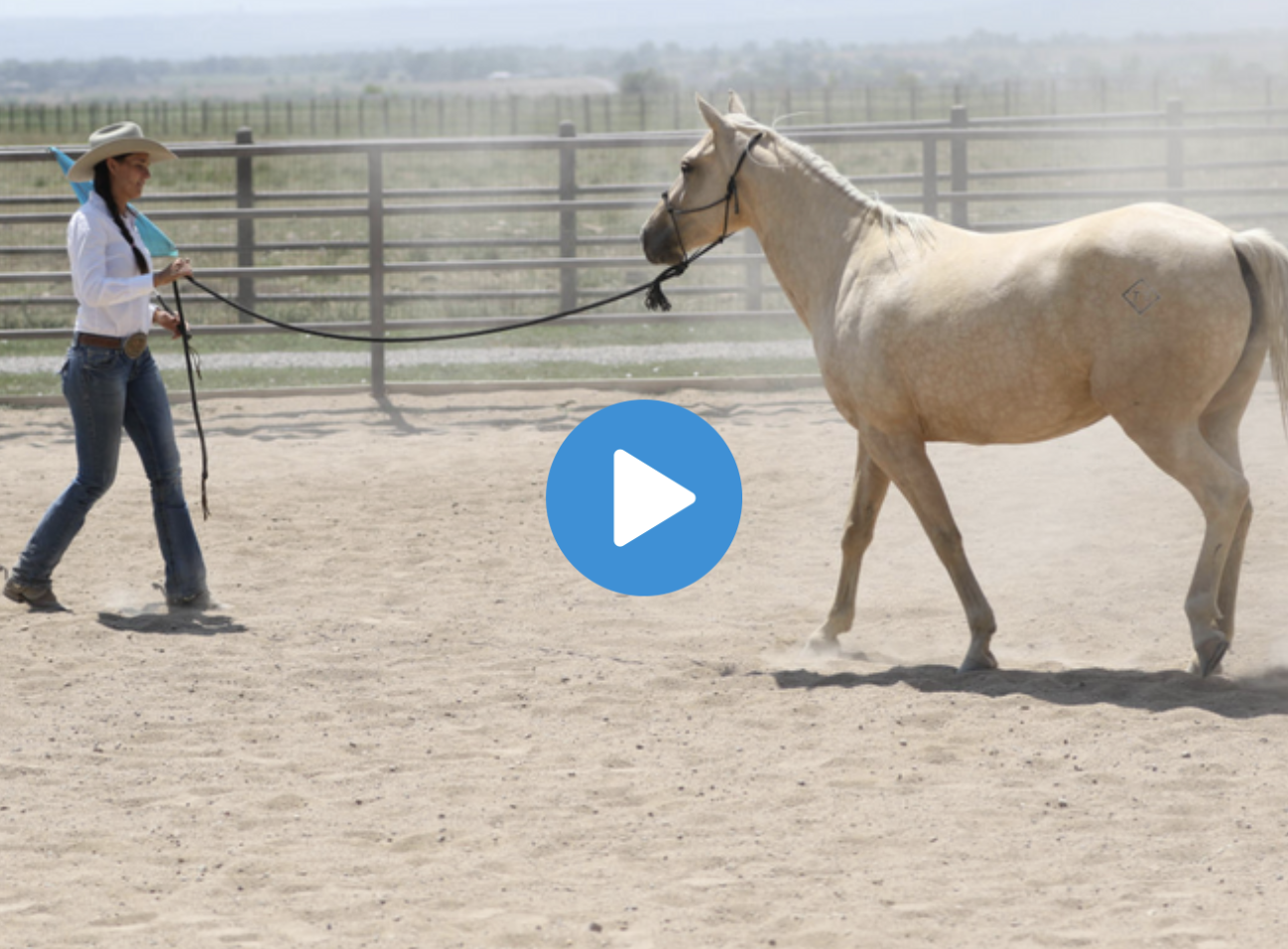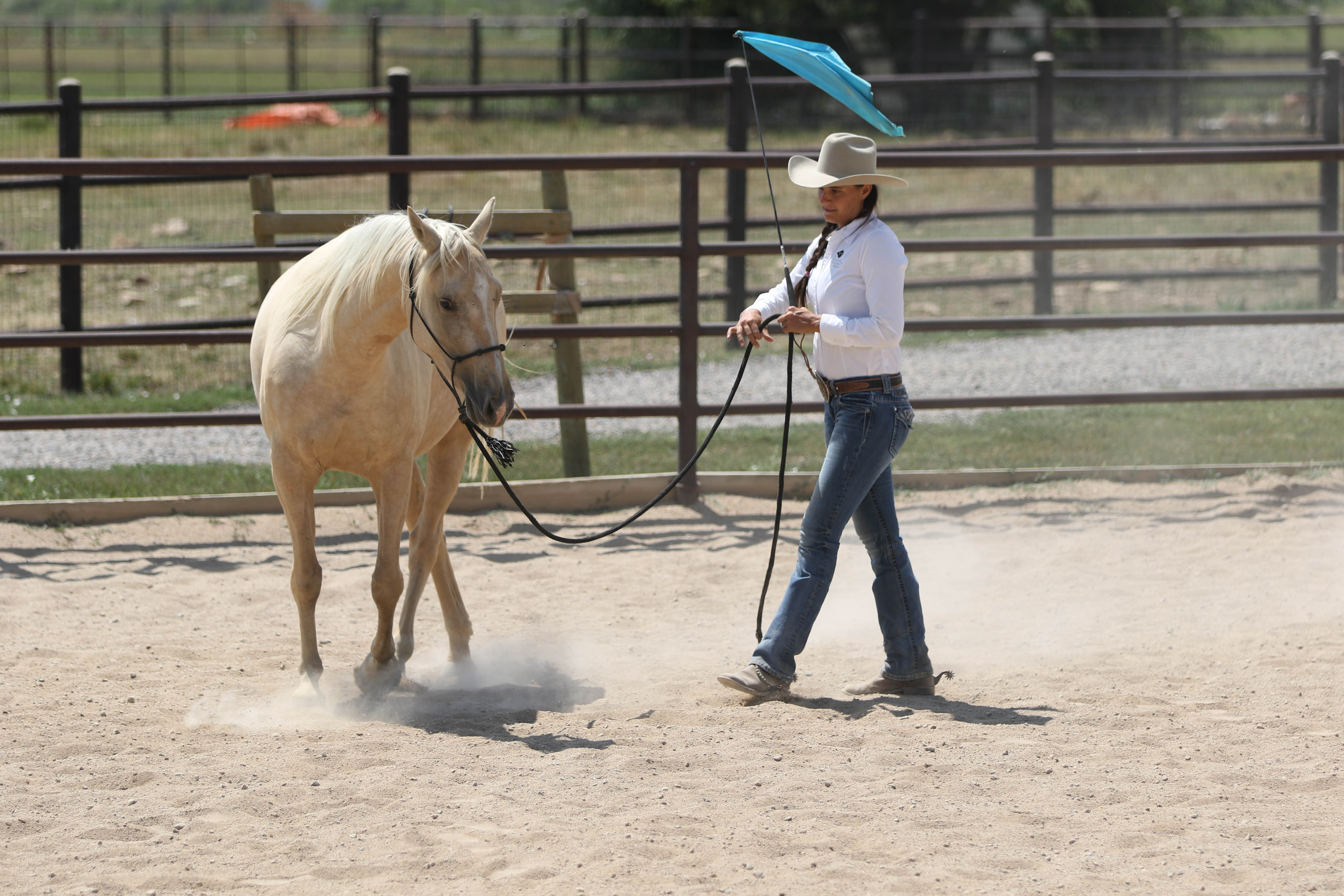Whether you’re at home or at a show, you always want your horse to be well-mannered. Good manners learned early will pay a lifelong dividend in pleasurable riding. And they can be invaluable aids in many specific situations, such as rehabilitation, as your horse ages. Consider these points in order to get the most out of longeing.
1. RESPECT. Once you’ve attached anything to your horse that connects you to him, you require a certain level of respect from your horse. Often horses misbehave on the end of a longe line or do things you would not want him to do if you were on him back. Why would we allow him to act that way just because you’re on the ground and not in the saddle? If you’re controlling your horse, it shouldn’t matter where you are. Running, bucking, or dragging you around aren’t things you enjoy your horse doing when you’re in charge. There are many techniques that will make these kinds of behaviors uncomfortable for the horse. Through consistent correction, your horse learns that such actions are more work than they are worth, and he’ll eventually abandon them.

2. WHERE IS HIS HEAD? When you and your horse are in the show pen, do you really want your horse’s head cranked to the outside of your circle? Of course not. So, don’t let him do it while he is moving around you on the longe line. Every time your horse’s head counter-bends, bump with your longe line until his head is looking in. Making the wrong things difficult and the right things easier and more comfortable encourages the behavior you want from your horse. While longeing, you want your horse looking in at you all the time, paying attention to you. If he is able to look wherever he wants, then he thinks paying attention to you isn’t important. That is a lesson you never want to teach your horse.
3. WHAT’RE HIS EARS DOING? On the longe line, you should expect your horse to look at you with his eyes and ears. How can a horse “look” with his ears? The ears tell you a great deal about what your horse is feeling. If his ears aren’t “focused” on you, then your horse isn’t really paying complete attention to you. A major goal of any groundwork, no matter the style, should be to train your horse to pay more attention to you by the end of the workout than he did when you started—as well as teaching your horse respect and trust. You always want all of your horse’s senses directed at you, so he is able to respond to your signals and your instructions.

4. BODY. Horses are strong but you must be the one in charge. In a pound-for-pound battle, your horse will beat you every time. However, there are tips and strategies you can apply to overcome your horse’s natural strength advantage. In longeing, one valuable technique is to leave the proper amount of slack in the lunge line. If there is too little slack and too much tension on your lead, you enable your horse to transmit his superior physical power directly to you. It’s like connecting the two of you together with a rigid piece of metal pipe. Your horse would quickly sense his size and strength advantage because, without any give in the pipe, he would be able to easily and quickly push or pull you anyway he wanted to. The proper amount of slack in the line limits the ability of your horse to do this.
5. TRANSITIONS. Be picky but be consistent. Again, think of how you want your horse to behave when you are riding him. Do you want your horse tossing his head up or down through transitions? Also think about how much you can change speed within a basic gait. Can I speed the walk up or can I slow it down some? How fast? How slow? Do the same in a trot and then in a canter. Try changes you might use naturally while riding. Perhaps go from a fast walk to a slow trot or from a slow trot to a fast canter. Do the same kinds of exercises when you are on the ground that you do when you’re in the saddle because this will help your horse understand that you expect the same behavior from him regardless of your position.
6. MOVING YOUR HORSE. There are different ways to tell your horse how you want him to move. While longeing your horse you should concentrate on your body, body language, and body rhythms. You may also prefer to concentrate on verbal cues and sounds or even hand and arm gestures, depending on the types of cues you use when you ride. It’s not so important which method you use, but it is very important that you be consistent. Pick the method you find most natural for you and then always use it, whether you’re on the ground or on your horse.

7. LINE LENGTHS. For your personal safety, be aware of the lengths of line you use while longeing. If you’re working off a halter or a longe line, remember that even though your horse is large, he can be nimble. With enough lead available to him, he can quickly swing around and put you in a dangerous position. Although the longe line is connected to the front of you horse, by adjusting the length of your longe line you can control your horse’s hindquarters. A horse that yields to the tension on a longe lead is less likely to turn into a position to kick at you.






